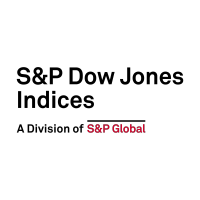Tag Archives: core
2023 Market Review for Asian Investors
There are potential diversification benefits for Asian investors who incorporate U.S. equities to alleviate their tendency for a home country bias. Representing nearly 60% of the global equity market, as measured by the S&P Global BMI, U.S. equities provide a larger opportunity set outside of Asia, along with potential diversification due to different economic structures…
- Categories Equities
- Other Tags
An Elevating Effect on Equal Weight?
The trouncing of smaller caps by mega-cap stocks has been one of the hallmark market themes of this year, with the S&P 500® Top 50 outpacing the S&P SmallCap 600® by 30% YTD.1 As a result of its inherent small-cap bias, the S&P 500 Equal Weight Index (EWI) has suffered accordingly, underperforming the S&P 500…
- Categories Equities
- Other Tags
- Categories
- Equities
- Other Tags
S&P U.S. Indices H1 2023: Analyzing Relative Returns to Russell
After a challenging year in 2022, the U.S. equity market saw a strong turnaround in the first half of 2023, with the S&P 500® up 17% since year-end 2022. Exhibit 1 shows that the rebound was also observed across the cap spectrum. Returns in the second quarter outperformed the first quarter after the market shook…
- Categories Equities
- Other Tags
- Categories
- Equities
- Other Tags
Examining Passive Performance at the Core
How does indexing work for large-cap equities? S&P DJI’s Hamish Preston and State Street Global Advisor’s Michael Arone take a closer look at lessons from 20 years of SPIVA, including fee savings, outperformance, and what the latest GICS® changes mean for sectors and industries moving forward.
- Categories Equities
- Other Tags
GICS Changes Are upon Us
As time passes, we draw ever closer to the date of the GICS® changes scheduled to take effect after the market close on March 17, 2023. There are five changes being implemented, some of which will move companies among sectors and others that will move companies within sectors. Recent blogs have announced these changes: GICS…
- Categories Equities
- Other Tags
Balancing the Scales in U.K. Equity with the S&P 500
Our recent paper Why Does the S&P 500® Matter to the U.K.? argues that the S&P 500 presents an opportunity for U.K. investors to diversify their revenue exposure and sector weights across geographies. Since British investors typically suffer from a substantial home bias, such diversification presents an opportunity to improve the risk/return profile of a…
- Categories S&P 500 & DJIA
- Other Tags
Do Friendly Bears Exist?
“Never sell the bear’s skin before one has killed the beast.” Jean de La Fontaine. On Wall Street, bear markets represent declines of at least 20% from their highs. But on Main Street, bears are anthropomorphized as friendly. Here we look at whether bears can also be “friendly” in financial markets, looking at the S&P…
- Categories Equities, S&P 500 & DJIA
- Other Tags
S&P U.S. Core Indices Mid-Year 2022: Analyzing Relative Returns to Russell
In Q2 2022, the S&P 500®, S&P MidCap 400® and S&P SmallCap 600® all fell about 15%, continuing the declines from Q1 as of June 30, 2022 (see Exhibit 1). The S&P 500 experienced its worst first half since 1970. Amid the challenging environment, the S&P U.S. Core and Style Indices have generally proved more…
- Categories Equities, S&P 500 & DJIA
- Other Tags
- Categories
- Equities, S&P 500 & DJIA
- Other Tags
S&P U.S. Indices Mid-Year 2022: Analyzing Relative Returns to CRSP
The first half of 2022 saw supply chain disruptions, interest rate hikes amid rising inflation and geopolitical tensions sour sentiment, creating a complex environment for equity markets. The S&P 500® was down 20%, which represented the worst start of the year since 1970. What was the impact on other S&P DJI U.S. equity indices and…
- Categories Equities
-
Other Tags
2022, Cristopher Anguiano, equities, Index Construction, index performance, Mid-Year 2022, performance comparison, quality, S&P 500, S&P Composite 1500, S&P DJI U.S. equity indices, S&P MidCap 400, S&P SmallCap 600, S&P U.S. Indices, U.S., U.S. Core, U.S. Core Equities, U.S. Equities, United States, US FA
- Categories
- Equities
- Other Tags
- 2022, Cristopher Anguiano, equities, Index Construction, index performance, Mid-Year 2022, performance comparison, quality, S&P 500, S&P Composite 1500, S&P DJI U.S. equity indices, S&P MidCap 400, S&P SmallCap 600, S&P U.S. Indices, U.S., U.S. Core, U.S. Core Equities, U.S. Equities, United States, US FA
Bearing Through
On Monday, June 13, 2022, the S&P 500® officially entered bear market territory, having lost more than 20% of the value from its peak on Jan. 3, 2022. Just as we didn’t know on Jan. 3 that the market was going to decline, today we don’t know the full extent and duration of the new…
- Categories Equities, S&P 500 & DJIA
- Other Tags
- Categories
- Equities, S&P 500 & DJIA
- Other Tags
















































